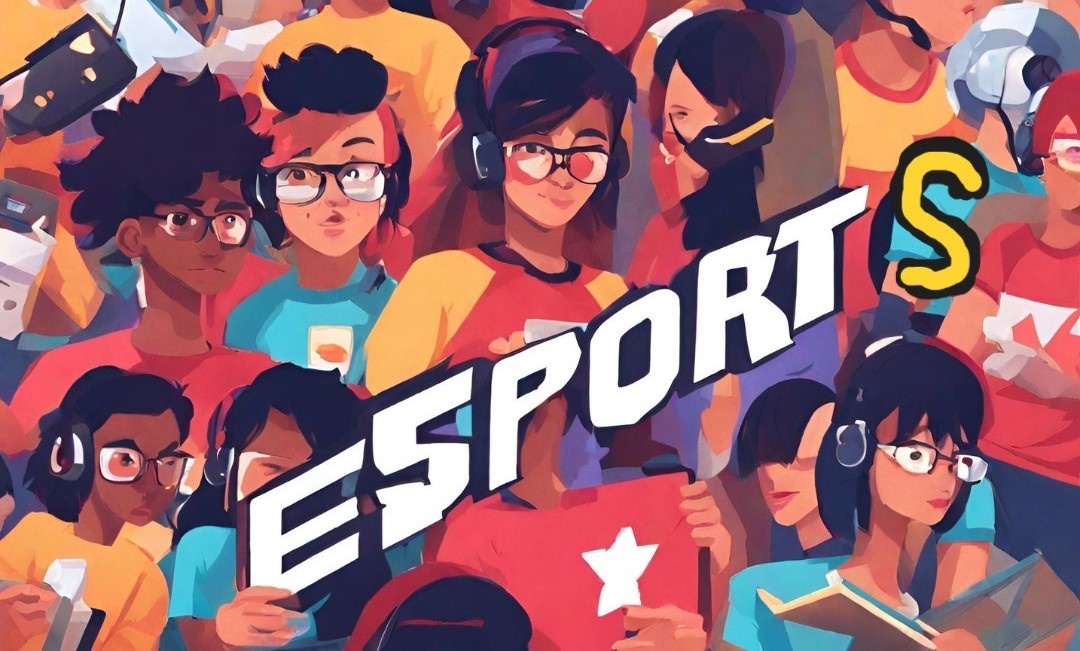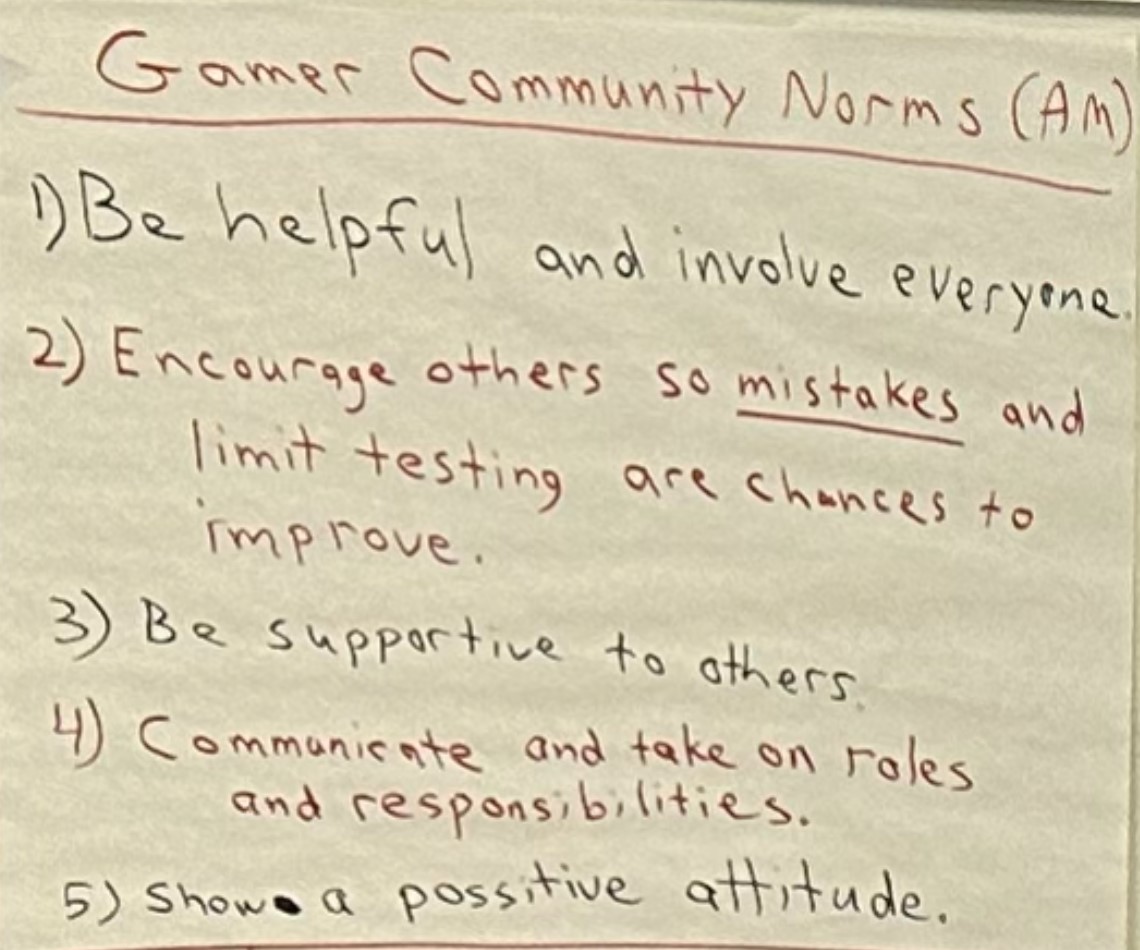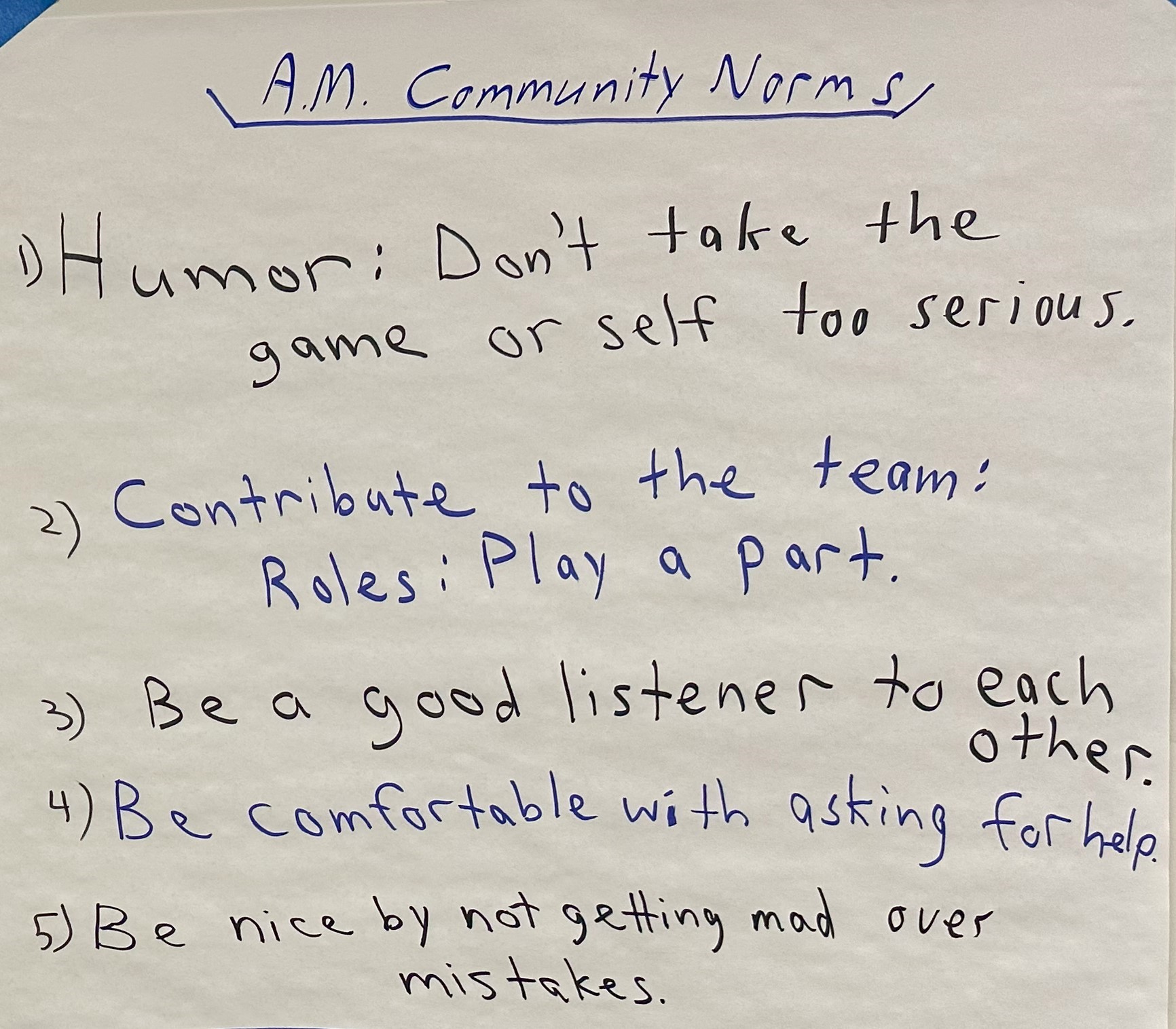
Esports Club Schedule and Routines
I’ve designed and run esports camps in the format of what students could experience as an esports club. The distinction is on a place where students can gather and socialize while playing esports titles and growing important college and career skills in the process. This format and purpose is different from running an Esports Team, which has a focus on preparing and performing in competitions. Both share an outcome around building college and career skills; however, the approaches are different.
What follows is an esports club format that is easy to implement. The focus is on engaging students in leading and having agency in their decision making, developing college and career skills, and creating and promoting a culture that welcomes and supports all participants. The “Schedule and Routines At a Glance” shares the steps to include in this esports club format. “Share and Follow the Session’s Schedule” is the largest block of time. All steps are important to incorporate. In the “Schedule and Routines Explained”, each step in the schedule gives important context and tools (where appropriate) to help understand and implement with quality and intentional support.
Schedule and Routines At a Glance
- Student Sign-Ins
- Equipment Setup
- Gamer Warmup Stretches
- Reflection Time: Community Expectations and Goal Setting
- Share and Follow the Session’s Schedule
- Gamer Cooldown Stretches
- Reflection on the Session
- Equipment Storage
- Dismissal

Schedule and Routines Explained
Student sign-ins
Helps track participation data.
Equipment setup
Students set up game consoles and computers. The work is managed by a student with the role of Game Crew Manager. This manager will also lead the putting away all equipment at the end of the session.
Gamer Warmup Stretches
Led by the Game Fitness Leader, the students participate in a series of gamer stretches. These will help students practice injury preventative measures. Suggest using 4-5 stretches. Do each stretch 2-3 times. Consider options provided by: Esports Healthcare: Gamer Warm-up
Incorporate the 4-4-4-4 Box breathing practice into each round of stretching. Students hold each stretch while inhaling for 4 seconds, holding their breath for 4 seconds, and exhaling for 4 seconds. During the entire time, students focus on their breathing.
These are good visual timers for Box Breathing:
- Breathing Exercise for Kids and Families: In for 4, Hold for 4, Out for 4
- Calming Navy SEAL Breathing Technique (4-4-4-4)
- Guided Box Breathing – 5 Minute Meditation (4-4-4-4)
The following videos give context for the value of this breathing technique. Crossover application to gaming is for managing one’s stress, emotions, and anxiety while playing.
Reflection Time
Review Gamer Community Expectations (Norms)
Students led by a club officer or Gamer Community Leader, along with the club sponsor, review the community expectations that were created by the club members at the first meeting. These 4-5 statements are observable behaviors that the club members and staff agree to follow and support to promote a healthy and welcoming club community.
Have students take 60 seconds to review the list and choose which one they believe should be the focus for that club session. Have the students vote for their choice. The top two vote getters become the primary focus of practice by all attendees (including staff).
Goal Setting
Have students set one goal that they want to accomplish or practice during the meeting.Give everyone 20 seconds of silent reflection time to decide and reflect on their goal.

These articles shares steps for student-created norms:
Share and Follow the Session’s Schedule
The club sponsor or student officer/leader shares the activities for the session. The schedule can vary depending on the activities identified by staff and students. Having a different mix can keep the experiences interesting and new.
Some ideas include:
Structured Game Time
Introduce an esports genre through playing a game from the category. This experience serves three purposes.
1) Exposure to game genres that students may not be familiar with or hesitant to try.
2) Opportunity to practice important Global Professional Skills like communication, collaboration, empathy, problem solving, creativity, and/or others.
3) Provides opportunities for students to make new connections for potential friendships as students are randomly grouped with others.
Explore Esports Careers & Networks
The esports industry is nearing two billion dollars. There are many job opportunties for students to learn about. Some options include:
- Speakers from Industry and Universities
Listening to the stories of professionals in their various jobs makes the careers real. Students can learn insider knowledge for how to prepare for what drives their interests. Universities share about their esports program and degree opportunities. I ran a camp for DePaul University (Desports) where they helped students discover how college can be affordable just by talking to the right people. - Industry-Related Projects
Students can produce marketing materials through content creation and video production. They can run live productions of events, including shoutcasting and tournament management. Designing jerseys and swag to represent their club and teams are other options. - Explore Esports Topics
Students can watch documentaries and read articles and then discuss how esports deals with issues and needs within their society.
In-House Tournaments and Intramurals
These friendly competitions are student-led and student-run. Titles are chosen from the list of approved games available in the club. Students get to play with their friends and potential new friends, and participate in low stakes competitions.
Free Play
This option should always be included during each club session. Students get to choose any game that is approved for club use and play. Having the freedom of choice is important and why students join the club. While the rest of the listed options help students become better gamers, academic learners, and future employees, this final option is where they get to live those opportunities while following their passions.
Gamer Cooldown Stretches
The Game Fitness Leader leads everyone through cooldown stretches that help reduce the chance of injury. As with the warmup stretches, encourage students to practice these activities on a daily basis. School life is similar to office workers who sit most of the day and work at a keyboard. Consider options provided by: Esports Healthcare: Gamer Stretches (Cooldown).
Incorporate the 4-4-4 breathing practice into each round of stretching. Students hold each stretch while inhaling for 4 seconds, holding their breath for 4 seconds, and exhaling for 4 seconds. During the entire time, students focus on their breathing.
Reflection on the Session
Reflect about the focus community expectations. Have students take 30 seconds to silently reflect on how they did and how the club as a whole could make even greater improvements. Use inquiry questions to have students share their thoughts.
Equipment Storage
The Game Crew Manager leads club members in putting away all equipment, including any computer shutdowns if required. The crew manager indicates when everything is put away appropriately.
Club Dismissal

